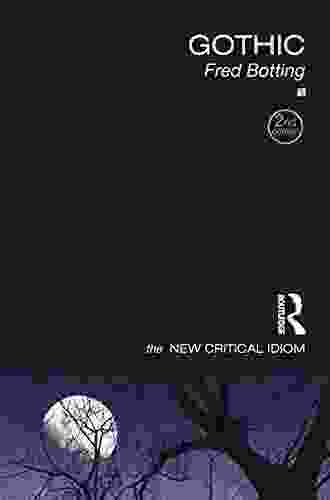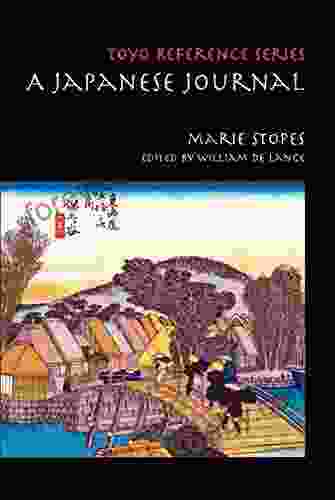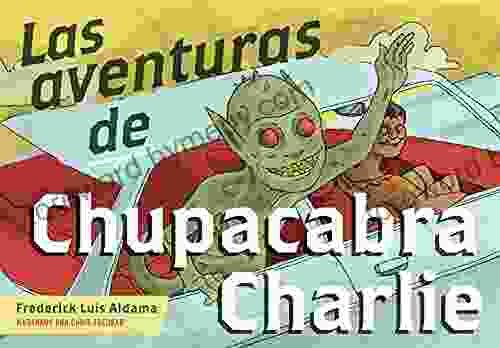Gothic: The New Critical Idiom

4.3 out of 5
| Language | : | English |
| File size | : | 941 KB |
| Text-to-Speech | : | Enabled |
| Screen Reader | : | Supported |
| Enhanced typesetting | : | Enabled |
| Word Wise | : | Enabled |
| Print length | : | 242 pages |
Step into the shadows and embrace the allure of Gothic literature. A genre that has captivated readers for centuries, Gothic fiction weaves a tapestry of darkness, suspense, and the supernatural that leaves an indelible mark on the imagination.
Delving into the Gothic Realm
Gothic literature emerged in the late 18th century as a reaction to the Enlightenment's rationalism and the rise of scientific thought. Authors such as Horace Walpole, Ann Radcliffe, and Mary Shelley tapped into the human fascination with the unknown, the irrational, and the monstrous. Their works transported readers to crumbling castles, gloomy forests, and eerie landscapes, where secrets lurked in every corner.
Characteristics of Gothic Literature
- Darkness and Gloom: Gothic settings are often shrouded in darkness, creating an atmosphere of foreboding and claustrophobia.
- Supernatural Elements: Ghosts, vampires, werewolves, and other supernatural beings haunt the pages of Gothic novels, blurring the lines between reality and the fantastic.
- Isolation and Loneliness: Gothic characters often find themselves isolated from society, trapped in their own desolate worlds.
- Psychological Horror: Gothic literature explores the dark recesses of the human psyche, revealing the irrational fears and desires that drive characters to madness.
- Atmosphere of Suspense: Gothic novels build tension and suspense through eerie foreshadowing, mysterious events, and the anticipation of impending danger.
The Evolution of Gothic Literature
Over the centuries, Gothic literature has undergone a series of transformations. From its origins in the Gothic Revival movement to its resurgence in the 20th century, Gothic themes and motifs have found expression in various forms and genres.
Gothic Revival
In the late 18th and early 19th centuries, Gothic architecture and art inspired a revival in Gothic literature. Writers such as Horace Walpole and Ann Radcliffe borrowed the genre's dark and atmospheric elements to create tales of terror and suspense.
Romantic Gothic
During the Romantic era, Gothic literature became infused with elements of Romanticism, such as the emphasis on the individual, the supernatural, and the irrational. Writers like Mary Shelley and Edgar Allan Poe explored the psychological depths of human nature through Gothic narratives.
Victorian Gothic
The Victorian era saw a flourishing of Gothic literature, with authors such as Charles Dickens, Wilkie Collins, and Bram Stoker crafting tales of mystery, murder, and the supernatural. Victorian Gothic often reflected the social and political anxieties of the time.
Modern Gothic
In the 20th century, Gothic literature underwent a revival, with writers such as Daphne du Maurier, Shirley Jackson, and Stephen King exploring contemporary themes through Gothic tropes. Modern Gothic often examines the psychological complexities of modern life and the horrors of the present day.
Gothic Characters: Exploring Darkness and Madness
Gothic characters are often complex and multifaceted, embodying the genre's exploration of darkness and madness. They may be victims of circumstance or driven by their own inner demons. Gothic villains are often charismatic but sinister, wielding their power for evil or their own twisted sense of justice.
Some of the most iconic Gothic characters include:
- Victor Frankenstein: The brilliant but misguided scientist who creates a monstrous creature.
- Count Dracula: The enigmatic and seductive vampire who preys on the innocent.
- Heathcliff: The brooding and vengeful inhabitant of Wuthering Heights.
- Norman Bates: The psychotic motel owner from Psycho, obsessed with his mother.
- Hannibal Lecter: The brilliant but cannibalistic forensic psychiatrist from The Silence of the Lambs.
Gothic Settings: Atmospheres of Terror and Isolation
Gothic settings play a crucial role in creating the genre's distinctive atmosphere. They are often isolated and desolate places, where the boundaries between reality and imagination blur. Gothic settings may include:
- Haunted castles: Crumbling and menacing, haunted by the ghosts of the past.
- Gloomy forests: Dark and foreboding, concealing hidden dangers and lurking shadows.
- Eerie moors: Vast and desolate, evoking feelings of loneliness and isolation.
- Claustrophobic chambers: Dark and oppressive, trapping characters in their own inner torment.
- Abandoned mansions: Decaying and forgotten, filled with secrets and unspoken horrors.
Gothic Themes: Exploring the Shadows of the Human Psyche
Gothic literature delves into the darkest corners of the human psyche, exploring universal themes that resonate with readers of all ages. These themes include:
- Death and Mortality: Gothic works confront the inevitability of death and the fragility of human existence.
- Fear and Madness: Gothic characters often grapple with overwhelming fear and descend into madness.
- Isolation and Alienation: Gothic characters are often isolated from society and feel alienated from the world.
- Evil and Redemption: Gothic literature explores the nature of evil and the possibility of redemption.
- The Supernatural: Gothic works often incorporate supernatural elements to heighten suspense and create a sense of mystery.
Gothic Literature Today: A Timeless Genre
Gothic literature continues to thrive in the modern world, with contemporary writers finding new ways to explore the genre's classic themes and tropes. From Guillermo del Toro's hauntingly beautiful films to the chilling pages of Shirley Jackson's novels, Gothic remains a vital and enduring genre that captivates readers with its exploration of darkness, suspense, and the human fascination with the unknown.
Gothic literature is a genre that transcends time and culture, exploring the darker aspects of the human psyche and the terrors that lurk in the shadows. Through its evocative settings, haunting characters, and chilling themes, Gothic fiction continues to fascinate, terrify, and inspire readers worldwide. Whether you are a seasoned fan of the genre or new to its captivating allure, Gothic: The New Critical Idiom provides a comprehensive guide to this timeless and unforgettable literary tradition.
4.3 out of 5
| Language | : | English |
| File size | : | 941 KB |
| Text-to-Speech | : | Enabled |
| Screen Reader | : | Supported |
| Enhanced typesetting | : | Enabled |
| Word Wise | : | Enabled |
| Print length | : | 242 pages |
Do you want to contribute by writing guest posts on this blog?
Please contact us and send us a resume of previous articles that you have written.
 Book
Book Novel
Novel Page
Page Chapter
Chapter Text
Text Story
Story Genre
Genre Reader
Reader Library
Library Paperback
Paperback E-book
E-book Magazine
Magazine Newspaper
Newspaper Paragraph
Paragraph Sentence
Sentence Bookmark
Bookmark Shelf
Shelf Glossary
Glossary Bibliography
Bibliography Foreword
Foreword Preface
Preface Synopsis
Synopsis Annotation
Annotation Footnote
Footnote Manuscript
Manuscript Scroll
Scroll Codex
Codex Tome
Tome Bestseller
Bestseller Classics
Classics Library card
Library card Narrative
Narrative Biography
Biography Autobiography
Autobiography Memoir
Memoir Reference
Reference Encyclopedia
Encyclopedia James Green
James Green Erin Bowe
Erin Bowe Franz Kellermann
Franz Kellermann Erika Mailman
Erika Mailman Fanny West
Fanny West Faith Ringgold
Faith Ringgold Matty Matheson
Matty Matheson Favole Favolose
Favole Favolose Herb Bryce
Herb Bryce Liza Monroy
Liza Monroy Fataniss Store
Fataniss Store Francesca Lia Block
Francesca Lia Block Robert Kakakaway
Robert Kakakaway Fredrik Backman
Fredrik Backman Graham Viney
Graham Viney Fiona Stocker
Fiona Stocker Felice Austin
Felice Austin Eriko Sato
Eriko Sato Mark H Newman
Mark H Newman Erin Miller
Erin Miller
Light bulbAdvertise smarter! Our strategic ad space ensures maximum exposure. Reserve your spot today!

 Clark BellTides: The Science and Spirit of the Ocean Unveils the Enchanting Symphony of...
Clark BellTides: The Science and Spirit of the Ocean Unveils the Enchanting Symphony of... Fabian MitchellFollow ·12.5k
Fabian MitchellFollow ·12.5k Terry PratchettFollow ·6.1k
Terry PratchettFollow ·6.1k Geoffrey BlairFollow ·18.7k
Geoffrey BlairFollow ·18.7k Thomas MannFollow ·8.1k
Thomas MannFollow ·8.1k Dalton FosterFollow ·11.2k
Dalton FosterFollow ·11.2k Xavier BellFollow ·8.9k
Xavier BellFollow ·8.9k Joseph ConradFollow ·10.6k
Joseph ConradFollow ·10.6k Chris ColemanFollow ·12.2k
Chris ColemanFollow ·12.2k

 Al Foster
Al FosterDive into the Enchanting World of Manatees: An...
Unveiling the Secrets of the Gentle...
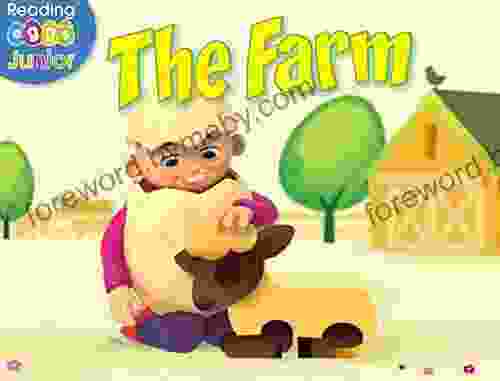
 Isaac Mitchell
Isaac MitchellThe Farm Reggie and Friends: US Version - A Captivating...
A Heartwarming Tale that Embraces...

 Esteban Cox
Esteban CoxThe Interior Design Handbook: Your Comprehensive Guide to...
Are you ready to...
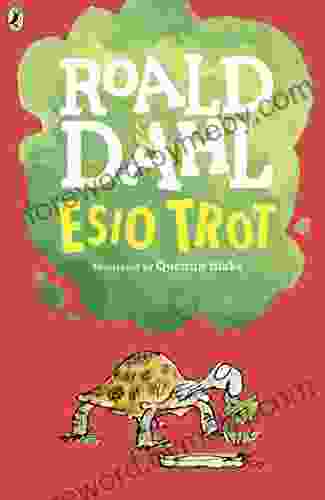
 William Wordsworth
William WordsworthFall Head Over Heels for "Esio Trot" by Roald Dahl: A...
Prepare to be charmed, amused, and utterly...
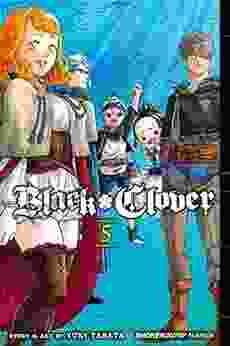
 Caleb Carter
Caleb CarterBlack Clover Vol Light Frida Ramstedt: A Thrilling...
Prepare to be spellbound by...
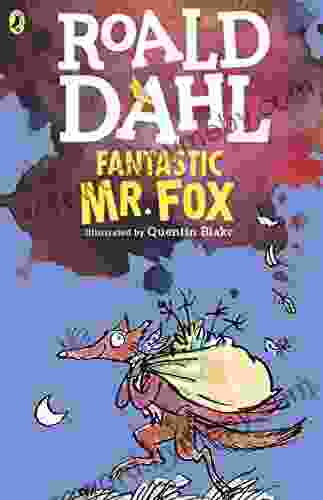
 Richard Simmons
Richard SimmonsFantastic Mr. Fox: A Literary Adventure That Captivates...
In the realm...
4.3 out of 5
| Language | : | English |
| File size | : | 941 KB |
| Text-to-Speech | : | Enabled |
| Screen Reader | : | Supported |
| Enhanced typesetting | : | Enabled |
| Word Wise | : | Enabled |
| Print length | : | 242 pages |


